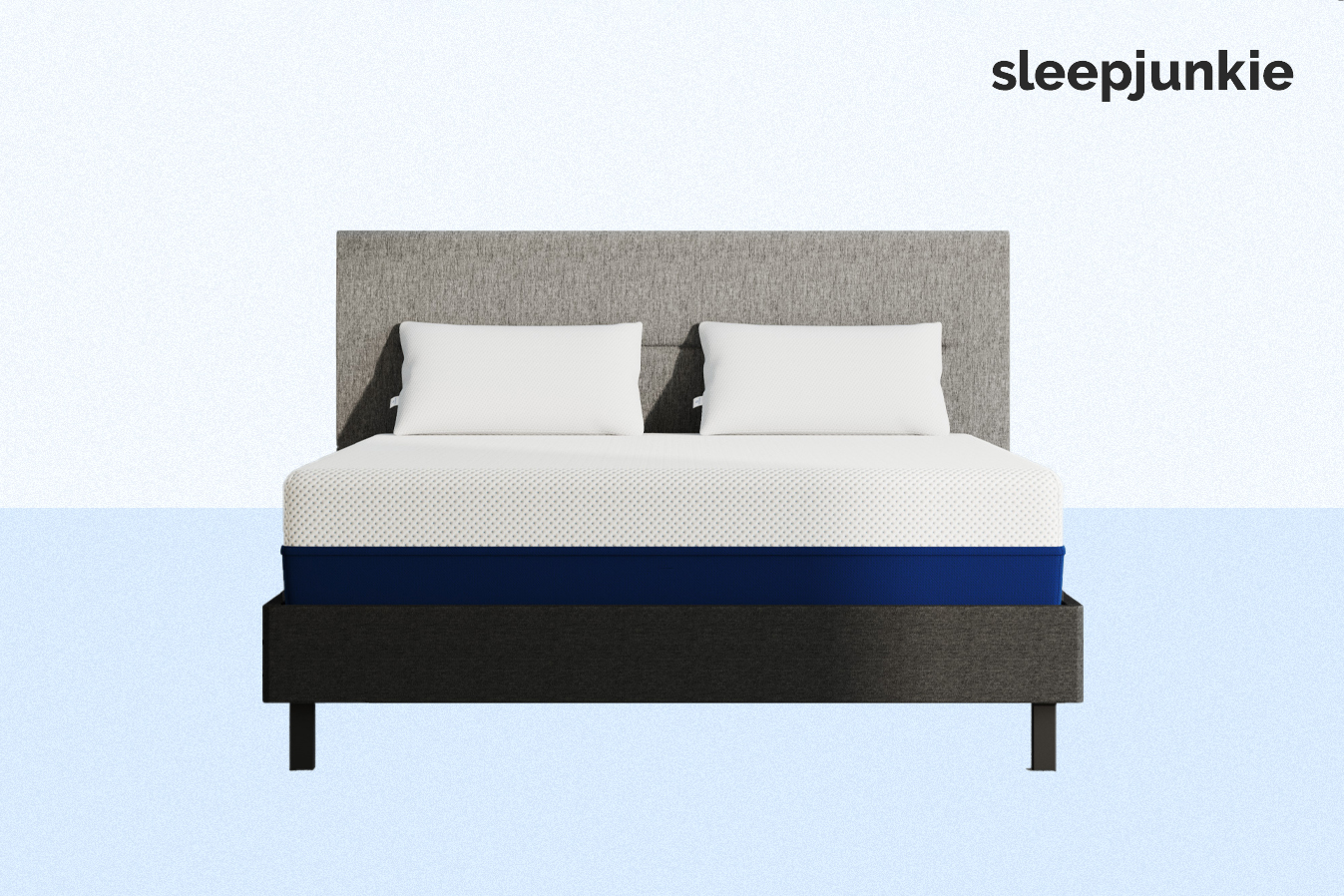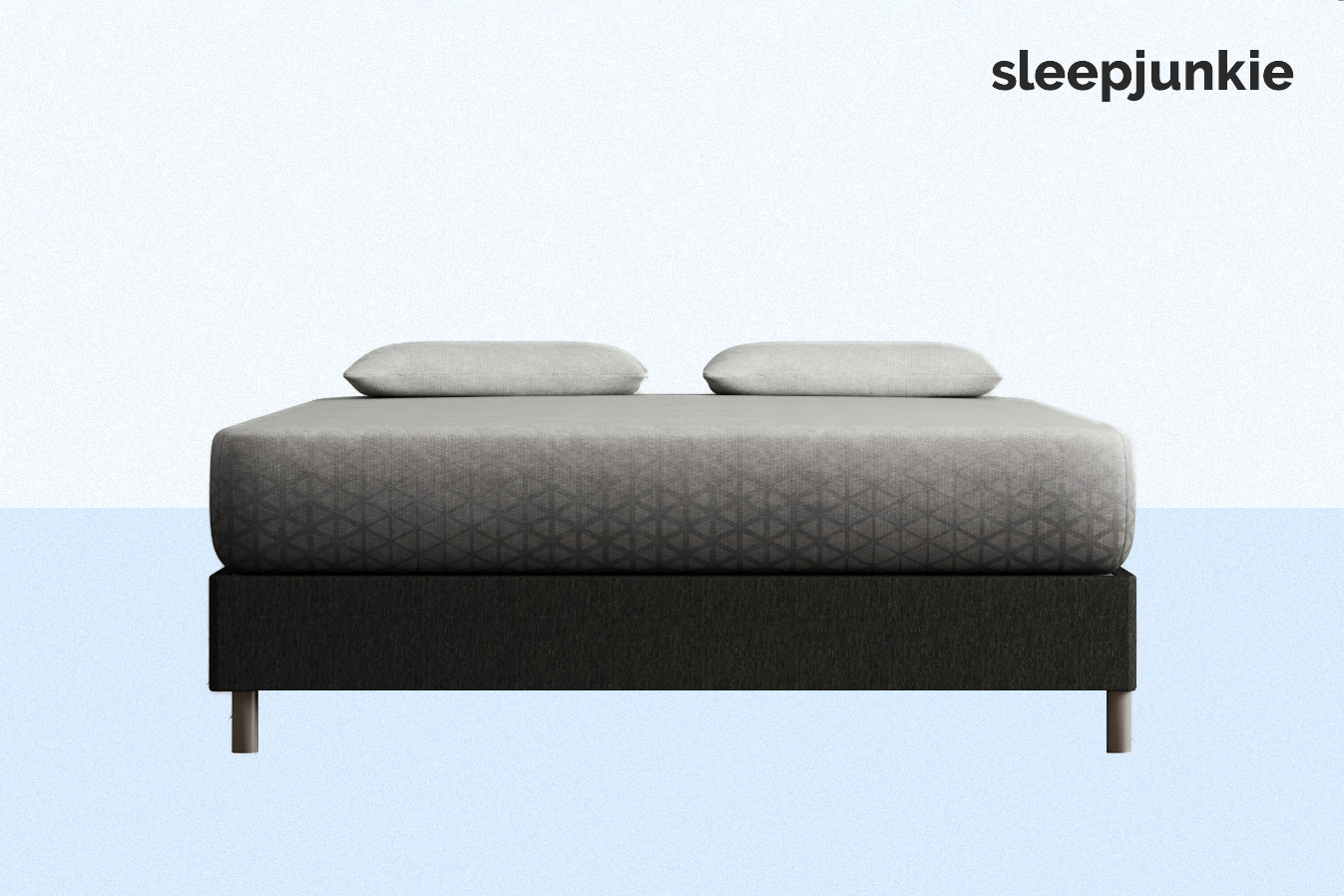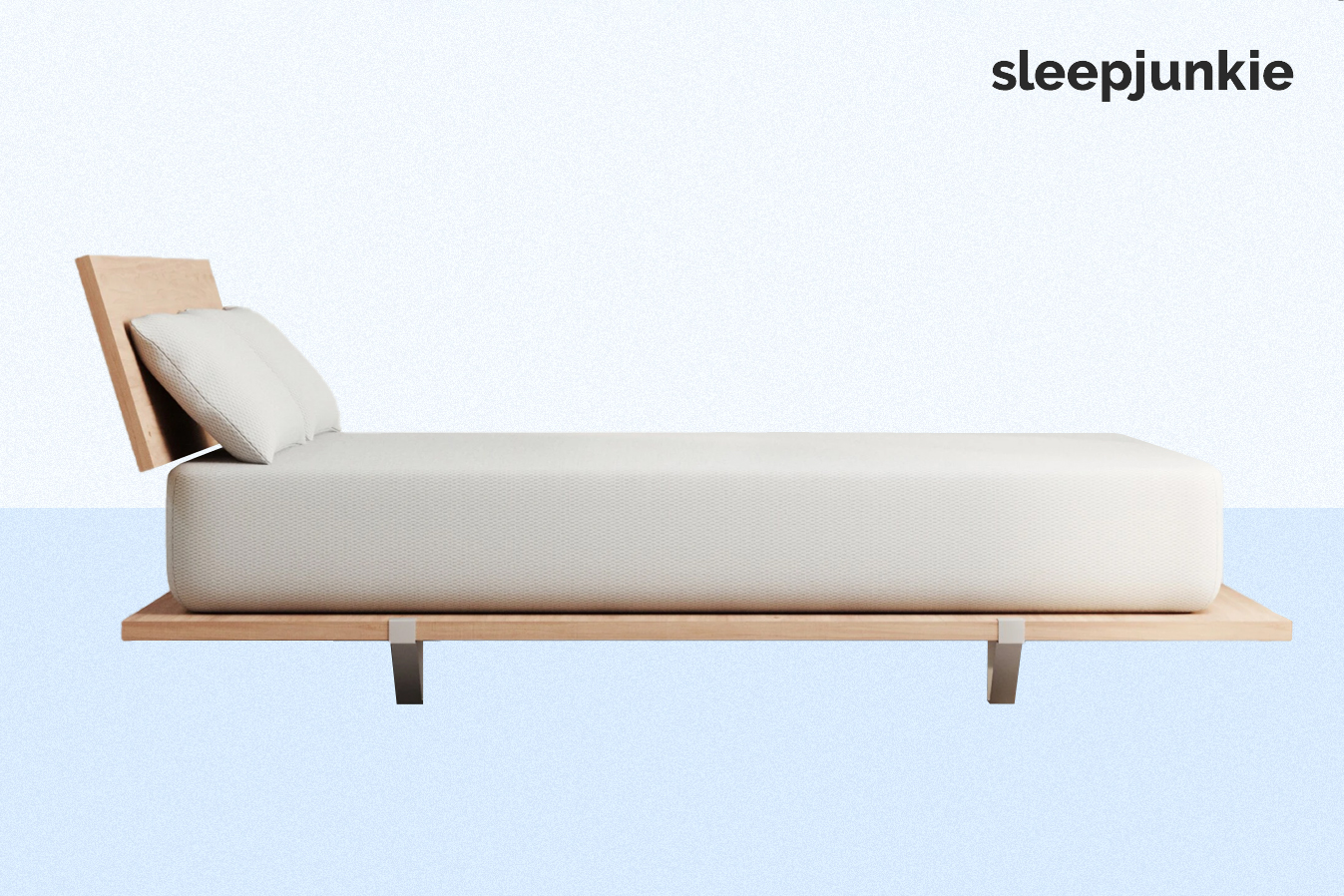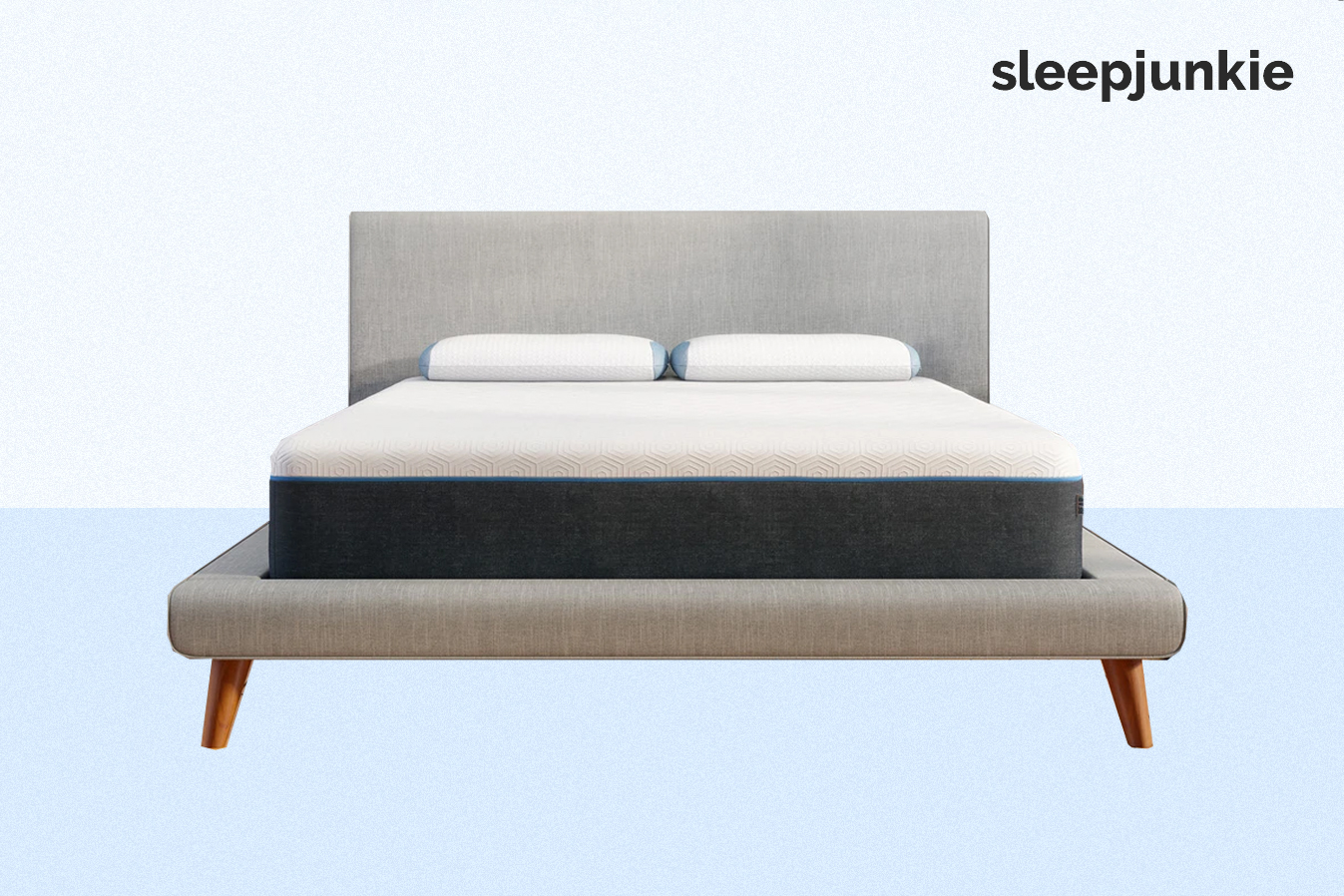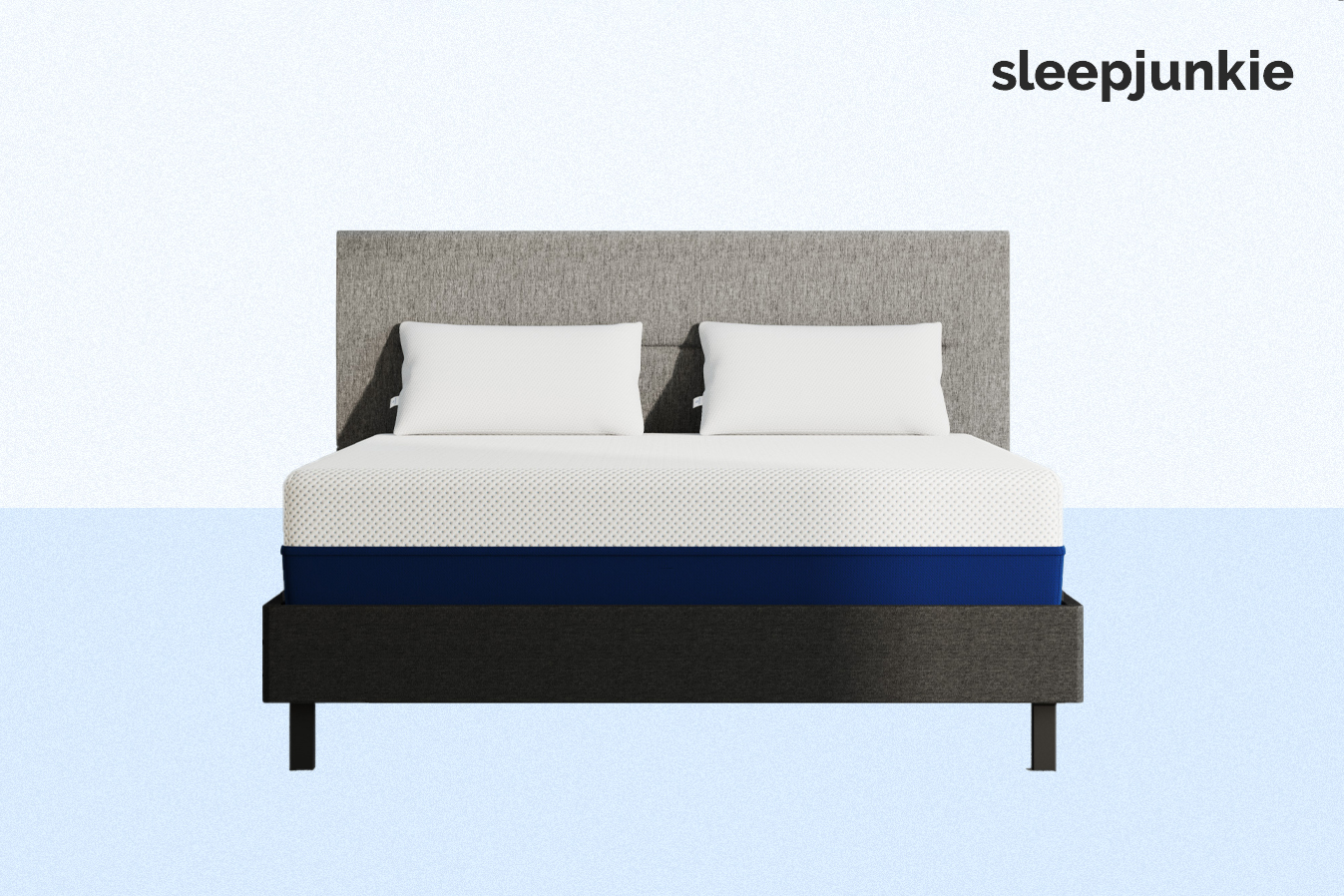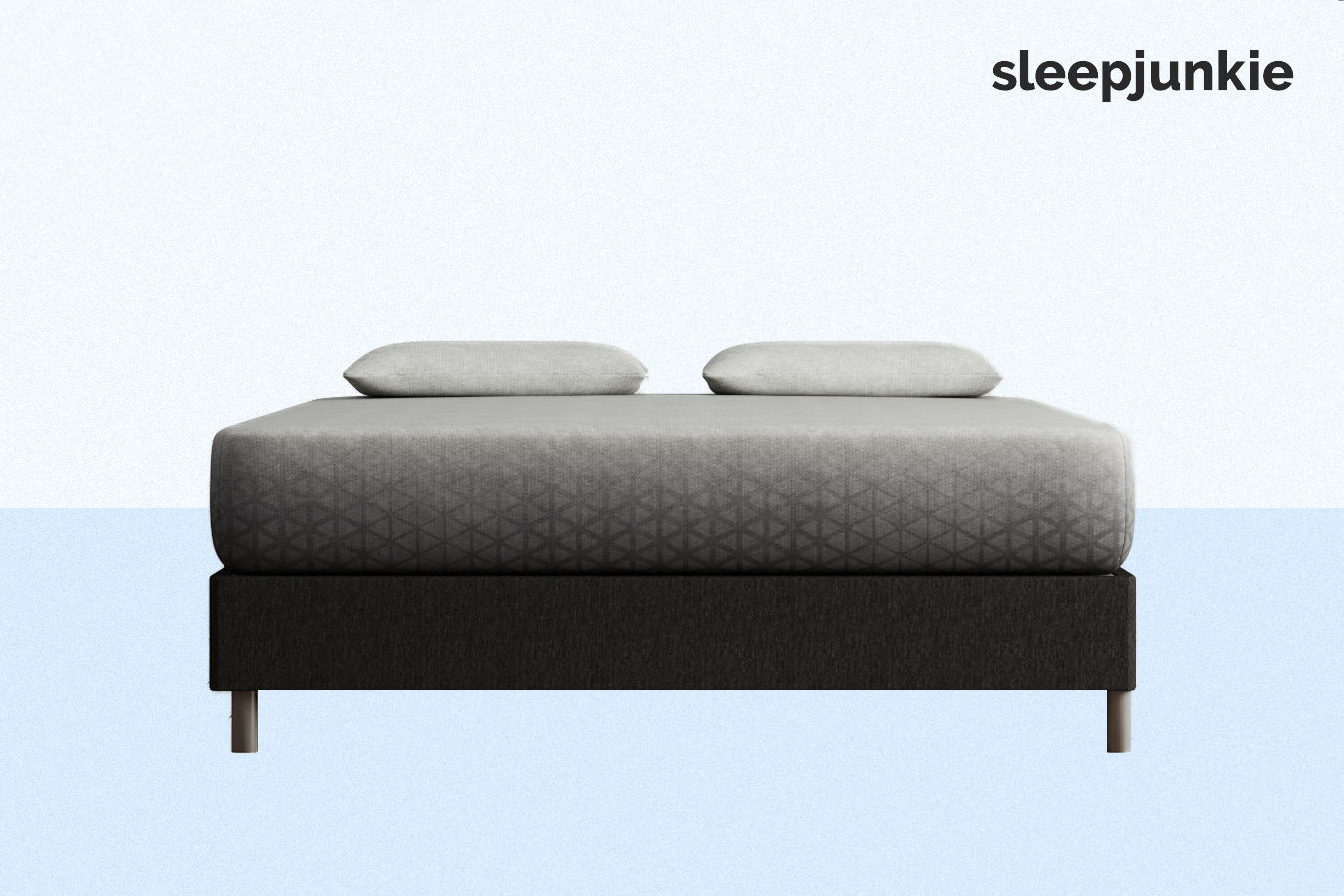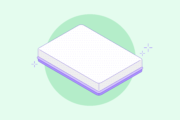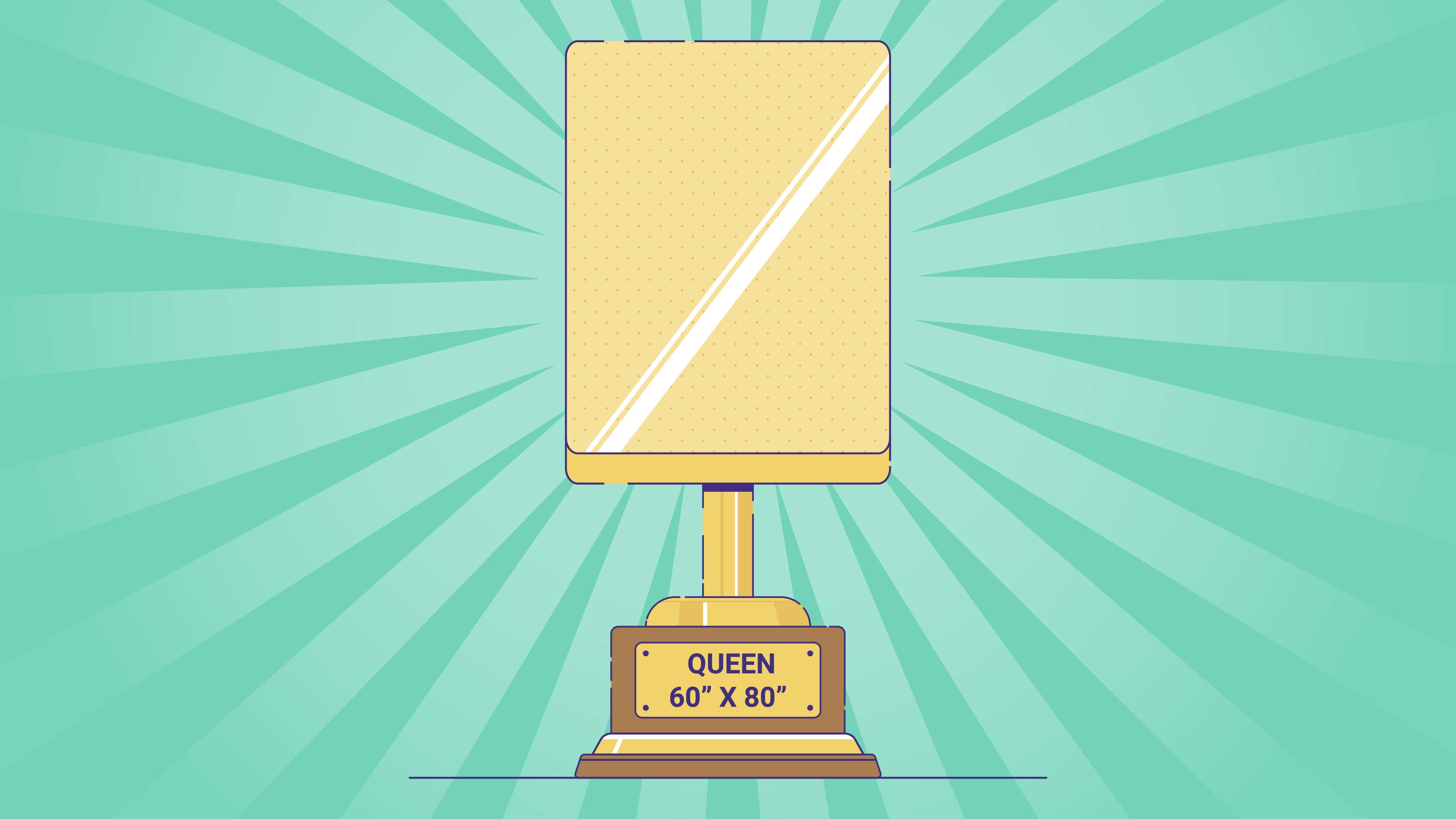
Best Queen Size Memory Foam Mattress (2024)

There are numerous benefits to sleeping on a memory foam mattress—from pressure and pain relief to the feeling of lying on a bed that has a cloud-like feel. And a queen is a popular size choice for many since it’s suitable for a wide variety of bedrooms and budgets.
In this article, we talk about how you can choose the best queen size memory foam mattress. We give our top recommendations for a queen memory foam mattress in this article. We also discuss how to choose the right mattress for you, whether it’s a queen memory foam mattress or another type and size.
Best Queen Size Memory Foam Mattresses of 2024
We all have different sleep needs, so it’s impossible to create one mattress that’s best for everyone. Instead, Amerisleep resolves the issue by selling five mattresses in a range of firmnesses to suit all kinds of people. The company’s most popular model is the medium feel AS3, with a 4.7-star rating averaged from more than 6,500 customer reviews.
Amerisleep offers an industry-leading 20-year warranty. Many mattresses lack a warranty that extends beyond 10 years, even if they’re otherwise high-quality beds. Amerisleep has enough faith in their exceptional materials to offer a prorated warranty after the first decade.
All Amerisleep memory foam mattresses feature a top layer of airy and responsive Bio-Pur® memory foam.
Bio-Pur® is also more eco-friendly than traditional memory foam. Amerisleep manufactures it using castor oil, replacing select petrochemicals.
Amerisleep’s unique memory foam is certified by CertiPUR-US®. That means it is free of toxic chemicals and low on VOCs for a cleaner night’s sleep.
Under the Bio-Pur® layer is the Affinity layer with HIVE® technology. HIVE® technology divides the bed into five zones for your head, shoulders, back, hips, and feet. HIVE® is firmer under your head, back, and feet for more support, and softer under your shoulders and hips for extra pressure relief and cushioning.
The base layer is Bio-Core®, a material that promotes durability and longevity. It resists sagging so well that Amerisleep will replace any mattress that sags as little as an inch.
AMERISLEEP AS3
- Breathable, bouncy Bio-Pur® foam
- HIVE® technology provides five support zones
- Generous 20-year warranty
The designers of the Zoma Mattress drew upon more than two decades of experience to craft a mattress that could boost restorative sleep. The result is a gel memory foam mattress with unique foams and features that promote an undisturbed night of sleep.
The top layer of gel memory foam includes Triangulex™ technology, which is triangular cutouts in the shoulder and leg areas. The triangular cutouts improve upon the gel foam’s natural cooling abilities, allowing more airflow through the mattress to wick away heat. The cutouts also create a contouring cushion, easing pressure points in your shoulders and legs.
The second layer is Zoma’s proprietary Reactiv™ foam, a latex-like material that increases the mattress’s bounce. Reactiv™ responds to your movements, keeping you from ever feeling stuck in your mattress. The base layer of Support+ foam deters sagging for a longer-lasting mattress.
Every Zoma Mattress comes with a 100-night sleep trial and a 10-year warranty.
ZOMA MATTRESS
- Gel memory foam with triangle cutouts for more comfort and coolness
- Responsive Reactiv™ adapts to your movements and keeps you lifted
- Support+ base resists sagging and supports the top layers for a decade or more
The Vaya Mattress was made to offer pure comfort at an affordable price and with a quality that you can trust. It’s simple two-layer, 12-inch design provides all the support, pressure relief, and cooling features that sleepers need. Vaya designed its mattress to support side, back, and stomach sleepers.
The top layer is 3 inches of Vaya Comfort Foam, a latex-like material that’s less dense than traditional memory foam. Vaya Comfort Foam contours to your body for cushion and pressure relief. Its airy design lets the material wick away unneeded body heat.
The base layer is 9 inches of supportive foam. Vaya’s base foam resists sagging and indentations, supporting you for many years.
All Vaya Mattresses are backed by a 10-year warranty and a 100-night sleep trial. A queen size Vaya Mattress is available exclusively on Amazon, with free shipping.
Vaya Mattress Highlights
- Supportive and comfortable no matter what your preferred sleep position is
- Vaya Comfort Foam molds to the body without trapping heat
- Budget-friendly prices with a 10-year warranty and 100-night trial
Bear focuses on making mattresses that increase your body’s recovery. The Bear Pro mattress takes this a step further with its added layer of copper-infused foam. Its medium-firm feel is a good way for back and stomach sleepers to keep their spine aligned. The extra cushioning provided by the copper foam allows a side sleeper to rest comfortably.
The top layer of copper-infused foam allows the mattress to pull heat away from the body that could build up and wake you. The copper kills microbes, bacteria, and viruses that could make you sick or cause your mattress to smell funky. A layer of gel memory rests under the copper foam, improving the bed’s heat retention and conforming abilities.
All Bear mattresses have a Celliant® cover, a fabric made with thermoreactive minerals. Your body heat activates the minerals in Celliant®, and the fabric transforms the heat into infrared energy. The infrared energy is absorbed by your body, allowing the energy to boost your local blood flow and reduce inflammation.
A Bear mattress includes a 120-night trial and a lifetime warranty. For further savings, you can buy the Bear Sleep Bundle, which includes two Bear Pillows, sheets, and a mattress protector.
BEAR PRO
- Celliant® cover promotes more recovery
- Copper infusion removes excess heat and repels microbes
- Medium-firm feel excellent for back sleepers and some stomach sleepers
Why a Queen Size Mattress?
Queen size mattresses are the most common bed size, and for a good reason. Queen mattresses can fit in most bedrooms that are at least 10 feet by 10 feet. This leaves enough room for bedroom furniture and walkway paths.
Many couples can comfortably share a queen, while single sleepers often love the spacious feel of the bed. Single sleepers may find that sleeping on a larger mattress extends their bed’s lifespan. When you sleep on a bigger bed, you can change up your sleeping spot. Resting in one place on a mattress can wear down the materials in that area while sleeping in different spots can prevent indentations.
A queen size bed is also affordable. The average price of a queen is $1,520, according to Sleep Like the Dead. And the average drops down to $1,150 when we consider only memory foam mattresses.
Other Bed Sizes to Consider
While a queen size mattress is a popular choice, it’s not always the best mattress size for everyone. Perhaps you need a smaller mattress for a smaller room. Maybe you’re looking for a larger bed to make a master bedroom feel luxurious. There are five more sizes you can consider—twin, twin XL, full, king, and California king.
Twin
Twin Mattress Dimensions: 38 inches by 75 inches
A twin size mattress is the smallest size that most sleepers can consider. They’re a common choice for a child’s first bed, but adults under 5 ½ feet should be able to rest well on a twin bed, too. A twin mattress is an excellent choice for a young adult with a small living space and budget.
Twin XL
Twin XL Mattress Dimensions: 38 inches by 80 inches
A twin XL size mattress provides 5 more inches than the standard twin bed. Twin XL mattresses are a good choice for smaller guest rooms since they can accommodate a broad range of single sleepers. It’s also an excellent bed for growing children—most tall teenagers can sleep well on a twin XL mattress.
Full
Full Mattress Dimensions: 54 inches by 75 inches
A full size mattress is 16 inches wider than a twin mattress, and 6 inches narrower than a queen. It’s a good choice for single sleepers who want more than what a twin bed offers but don’t have the money or space for a queen.
You may also see a full size mattress referred to as a double bed. Despite this misleading name, we can only recommend a full bed for single sleepers. While smaller couples may be able to nestle comfortably on a full size bed, many others will find it a narrow fit. After all, if you were to cut a full size mattress in half, each bed would have the width of a crib mattress.
King
King Mattress Dimensions: 76 inches by 80 inches
A king size mattress is the largest standard mattress available, which makes it an excellent choice for any couple who finds a queen size mattress cramped. Each person can have plenty of personal space since half of a king size mattress equals a twin XL mattress.
King mattresses are bulky and should only be bought for bedrooms at least 12 feet by 12 feet. While a king bed can be squeezed into smaller bedrooms, the large mattress can make a small room feel claustrophobic.
California King
California King Mattress Dimensions: 72 inches by 84 inches
A California king size mattress is 7 feet long, which makes it an ideal fit for anyone who finds other mattress sizes too short. Many sleepers more than 6 feet tall find their dangle over the edge of smaller sizes. Though the bed is narrower than a standard king, it still features plenty of personal space for couples.
As with a standard king, we recommend California king mattresses only for rooms that are 12 feet by 12 feet or more. See our California king vs queen mattress guide for more information.
Why a Memory Foam Mattress?
Memory foam mattresses mold to your body, no matter what your sleeping style is. Its adaptability ensures that no part of your body is unsupported, relieving pressure points across your body.
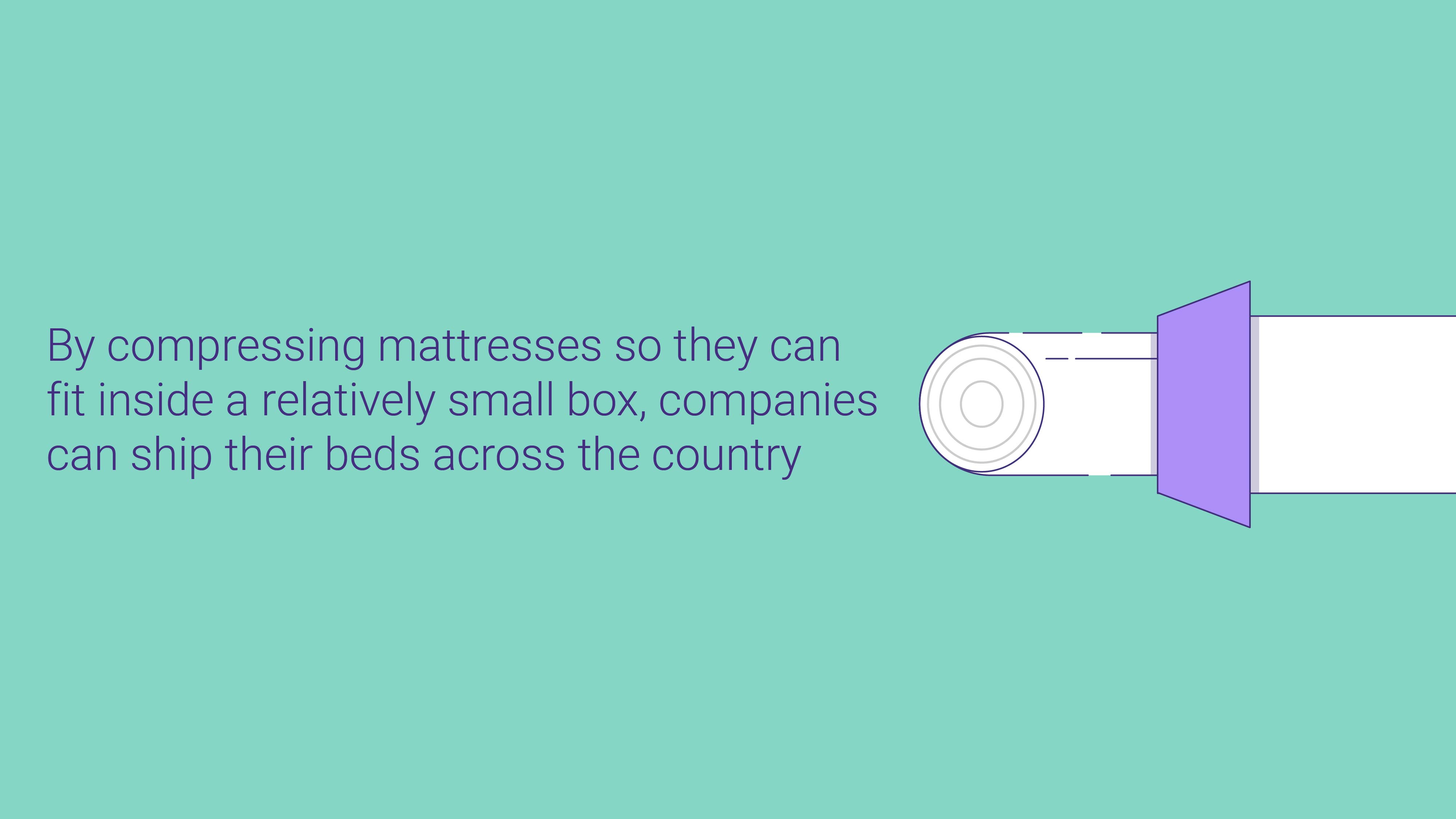
A lot of memory foam’s popularity also comes from the rise of mattresses in a box. By compressing mattresses so they can fit inside a relatively small box, companies can ship their beds across the country and straight to your front door.
Benefits of Memory Foam
Memory foam is one of the best materials when you’re shopping for a comfortable mattress that can keep you in good health. It’s a durable material, with high-quality beds lasting a decade or more.
Pressure and Pain Relief
Memory foam is a responsive material, designed to mold to your body’s curves. This sensitivity means common “problem areas” such as your shoulders, hips, or the small of your back won’t go unsupported, easing pressure points that can turn painful.
People with chronic pain conditions often find they sleep best on a memory foam mattress. When the material relieves pressure points, it also eases joint aches and muscle pain.
Motion Isolation
Have you ever been awakened by your partner tossing and turning or getting out of bed to use the bathroom? It’s quite likely your sleep was disturbed because your mattress failed to isolate your partner’s movements. Memory foam is one of the best materials for preventing motion transfer, making it an excellent mattress for couples.
Although it’s common in mattresses now, memory foam was first designed as a crash protection material. So when you move on a memory foam mattress, the bed absorbs the motion at the point of impact.
Microbe Resistant
Sleeping on a memory foam mattress can help you stay in good health. Because memory foam is a naturally dense material, it’s difficult for bacteria, fungi, and pests such as dust mites to penetrate the hypoallergenic mattress and settle inside.
Mold spores and dust mites that infiltrate your mattress can cause allergic and asthmatic reactions, including:
- Sneezing
- Runny or stuffed nose
- Skin rash
- Red, watery eyes
- Coughing
- Difficulty breathing
- Chest tightness or pain
Long-Lasting Durability
Memory foam mattresses are one of the more durable beds you can find.
On average, they tend to last at least a year or two more than innerspring or hybrid mattresses. Natural latex beds do tend to last longer, but they’re usually much more expensive than a high-quality memory foam mattress.
Drawbacks of Memory Foam
There’s no such thing as the perfect mattress, and memory foam has a couple of cons to offset its many pros. Some people fear their memory foam mattress might become a heat trap. Others may hesitate to buy after hearing about that “new mattress smell.” And a few sleepers miss the bounce that a traditional innerspring mattress provides.
Heat Retention
Memory foam’s most frequently mentioned disadvantage might be its tendency to retain body heat. Initially, traditional memory foam was too dense to let air circulate freely, limiting how much heat could be removed from the mattress.
That’s become less of a problem as many manufacturers add cooling materials that can better wick away heat. Gels are a common choice, along with graphite, charcoal, copper, titanium, and other materials.
Plant-based memory foam has also emerged as a cooler alternative to traditional memory foam. By replacing certain petrochemicals in production, the resulting foam is more breathable and sustainable.
Off-Gassing
The other potential downside to memory foam is off-gassing. Off-gassing can cause an unpleasant odor after you unbox your memory foam mattress. The smell is the result of volatile organic compounds (VOCs) leftover from production. Once exposed to open air, the VOCs break down, causing a noticeable odor.
Unlike heat retention, off-gassing is a temporary issue. The smell often fades away within three days, a week at most. You can speed up the dissipation by keeping your mattress in a well-ventilated area and increasing the room temperature.
If you’re sensitive to smells, try shopping for a mattress certified as low-VOC. It’s impossible to make a memory foam mattress without any VOCs, but the fewer VOCs that a bed contains, the less likely it is to off-gas. Some companies also air out their mattresses before selling them to eliminate any lingering odors.
No Bounce
Whether or not a memory foam mattress’s lack of bounce is a drawback depends on your personal preferences. Memory foam tends to cradle you instead of lifting you, and while some enjoy feeling like their mattress is hugging them, others prefer to stay on top of their bed. If you want a bed that feels like a memory foam mattress with some added bounce, consider a hybrid mattress.
Other Types of Mattresses
Memory foam isn’t the only type of mattress on the market. If a memory foam bed doesn’t sound like the best mattress for you, you can also consider a latex, hybrid, or innerspring mattress.
Latex
Latex is often compared to memory foam because both are responsive, pressure-relieving materials. But while latex and memory foam offer similar benefits, the two materials do have different feels. Latex often feels naturally firmer, cooler, and bouncier than a memory foam mattress, and while some sleepers enjoy that, others may not.
A natural latex mattress is also one of the more expensive beds. A queen size latex mattress costs $21,00 on average. Many customers find the price fair since a latex mattress often lasts more than a decade, sometimes up to 15 years. For those shopping on a budget, they want to consider lower-priced latex mattresses that offer plenty of value.
Hybrid
Hybrid mattresses combine the supportive coils of an innerspring with the plush pressure relief of a foam mattress. The coils allow for more airflow than a traditional memory foam mattress, keeping you cool while you sleep. And the thick foam comfort layers provide more pressure and pain relief than a typical innerspring bed.
What stops many a sleeper from purchasing a hybrid mattress is the bed’s price. A hybrid costs more than other types of mattresses because the bed mixes high-quality materials. The average queen size hybrid mattress is $1,700. Some find the higher prices fair for a higher comfort level, while others may want to shop for a less expensive mattress.
Innerspring
Innerspring mattresses remain one of the more recognizable bed types, even as other mattress types continue to rise in popularity. Traditionally, an innerspring mattress contains a coil support system sandwiched between thin layers of foam and fabric. However, many innerspring mattresses now have more modern designs to provide sleepers with a good night’s rest.
Still, innerspring mattresses are well-known for their dissatisfied owners. Many complain about how an innerspring doesn’t provide the pressure relief they need. Others note the bed is quick to sag within a few years as its coils wear out, or how the coil design enables motion transfer across the mattress.
Sleeping Position
An important consideration for choosing a mattress is your sleeping position. Side sleepers need different support than back sleepers, and both require different support than stomach sleepers. Spend a few nights and mornings observing how you tend to fall asleep and what position you usually wake up in.
Body type can also influence what mattress firmness is right for you, but your preferred sleep position should be your first consideration.
Side Sleepers
The majority of us are side sleepers, which is excellent since it’s one of the healthiest sleeping positions. Side sleeping limits snoring and sleep apnea and keeps your spine correctly aligned. However, you might want a knee pillow to maintain proper hip alignment.
A mattress for side sleeping should support your spine and provide pressure relief to your joints. Look for mattresses in the soft to medium firmness range. Side sleepers who sleep on too-firm mattresses often wake up with sore hips and shoulders.
Back Sleepers
Back sleeping isn’t as common side sleeping, but it’s still a good position that evenly distributes your body weight and keeps your spine aligned. An even sleeping surface with little sinkage will help you sleep well at night.
A mattress for back sleeping should have a medium-firm to firm feel. If you want a touch of softness to your mattress, try a medium bed with targeted back support.
Stomach Sleepers
Stomach sleeping is typically considered unhealthy because of the risks for chronic neck and back pain. When you sleep on your stomach, your neck must be twisted at an awkward angle so you can breathe during the night. At the same time, gravity pushes down on your belly, causing your spine to stretch beyond its neutral alignment.
A mattress for a stomach sleeper should have a firm feel to keep the stomach lifted, although we advise changing sleeping positions instead. Stomach sleepers can slip a pillow under their belly to further prevent sinkage.
Budgeting for a Queen Size Memory Foam Mattress
When you’re mattress shopping, one of the big questions is, “What’s a fair price to pay?” As we mentioned earlier, the average price of a queen memory foam mattress is $1,150, so that gives you an idea of how much you can expect to spend. You should be able to find a quality memory foam mattress for around $500 to $1,500.
You can even find a few gems for $300 and more. We don’t recommend buying a mattress priced lower than that because they often contain low-quality materials and will quickly wear out.
To save on money, try shopping online. Online mattress companies cut down on their costs by selling directly to the customer, rather than to middleman mattress stores. Try to always choose a mattress with a sleep trial, so you can easily return your mattress if it’s not the right one for you.
Support Your Memory Foam Mattress
When you’re buying a memory foam mattress, don’t forget to first check your existing bed frame to see if it offers suitable support. Memory foam mattresses need almost uniform support—frames with thin rods or wide gaps are not good because they let gravity push parts of the mattress down, causing premature sagging. Box springs should also be avoided because their inner coils are usually too far apart.
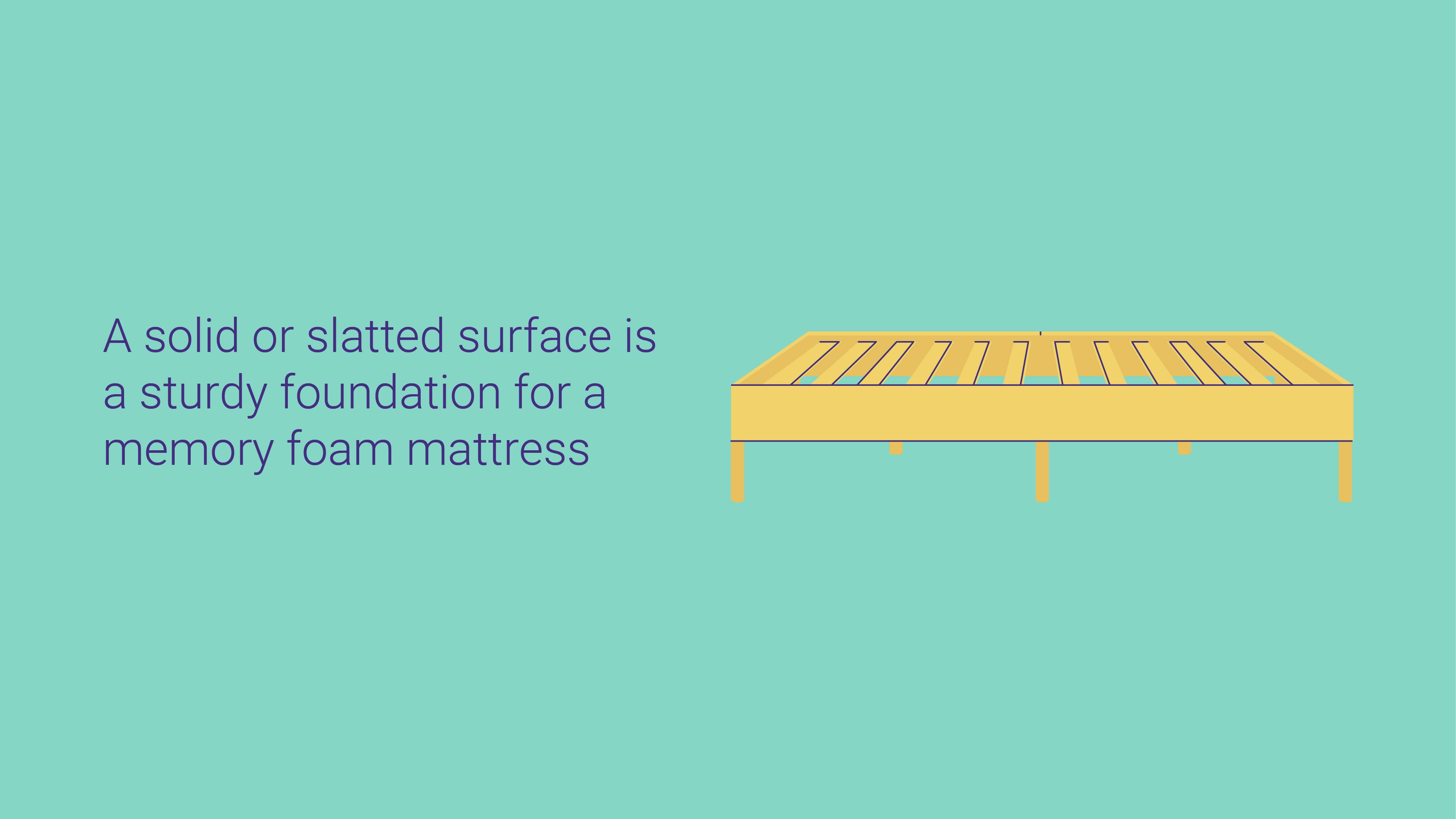
A solid or slatted surface is a sturdy foundation for a memory foam mattress. Consider platform bed frames, panel beds with slats, or adjustable bases as you shop. Even the floor can support your mattress since it’s a flat surface. We should note that using the floor is more likely to get your mattress dirty than using a proper mattress foundation.
Slatted bases are often preferred because they let air circulate through the bottom of the mattress, which prevents heat and moisture from accumulating. A solid surface can trap heat and humidity, disturbing your rest and letting mold and mildew flourish under your mattress. Just make sure the slats are spaced no more than 2.75 inches apart.
What if you have a bed frame, but it lacks the needed support? You don’t necessarily need to buy a new bed frame. Instead, see if you can slip a bunkie board or moisture-resistant plywood between your mattress and the bed frame. The board’s solid support will help your mattress retain its shape.
Commonly Asked Questions
Does memory foam get harder over time?
While the feel of a quality memory foam mattress shouldn’t vary much, a memory foam bed is more likely to soften than firm up after a few years. Memory foam can lose some of its responsiveness with age, so when you lie down on an old memory foam mattress, you might feel as if you’re sinking into the bed.
However, a memory foam mattress can feel harder over time if its comfort layer flattens from use. If that happens, you can try restoring your bed’s softer feel with a memory foam topper, if you’re not ready to buy a new mattress.
What are the disadvantages of a memory foam mattress?
Memory foam’s biggest disadvantage is its ability to retain body heat. Traditional memory foam is a dense material that doesn’t promote airflow. The density means that it’s difficult for heat to escape the mattress once it’s been absorbed. Newer memory foam formulas tend to create a more breathable foam or add cooling agents.
The other disadvantage of memory foam is the temporary smell that a new mattress can have. This chemical odor is the result of off-gassing. Off-gassing is when volatile organic compounds (VOCs) break down at room temperature. Most of the time, the smell is gone within a few days to a week. You can also buy a mattress certified as low-VOCs to ensure minimal off-gassing.
How many inches should a memory foam mattress be?
We recommend choosing a memory foam mattress that’s at least 10 inches thick. If you’re shopping on a restricted budget, try to go no lower than 8 inches.
Thinner mattresses can’t provide the support of a taller bed. A shorter mattress lacks transition layers or has a smaller base. You are more likely to feel uncomfortable on a thin bed and it often wears out before a thicker mattress would.
Is a memory foam mattress good for a bad back?
A memory foam mattress can help you wake up pain-free. Memory foam yields to heat and pressure. The material molds itself to you for full-body support and pressure relief when you lie down.
Just make sure you choose a firmness that can support your sleeping position. You can wake up with a sore back if your bed is too soft or too firm.
Are memory foam mattresses good for side sleepers?
A memory foam mattress is an excellent choice for a side sleeper. Side sleepers need a bed that features pressure point relief for a good night’s sleep. Memory foam is one of the best materials for easing pressure and pain points in the body.
What happens if you sleep on a memory foam mattress too soon?
Nothing should happen if you’re quick to sleep on a new memory foam mattress. As long as your memory foam bed is made with quality materials it shouldn’t affect anything.
Many mattress in a box companies do ask that you wait up to a full day to let your mattress expand before you sleep on it. This direction exists mostly to make sure the bed is at its most comfortable when you try it out. It’s not because sleeping on it will damage your mattress’s materials sooner.
Have You Found Your Next Mattress?
Memory foam mattresses are some of the best beds on the market, while a queen size is the most popular size choice. So it’s natural for many sleepers to gravitate toward a queen size memory foam mattress.
Before you buy your next bed, make sure you read through its features and policies. You should always strive to feel confident in your mattress choice. A new mattress should never feel as if you’re settling for a decent sleeping surface.
